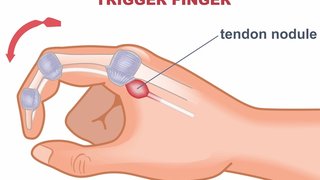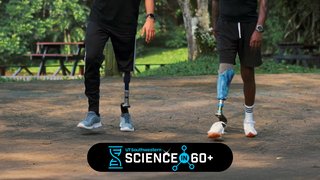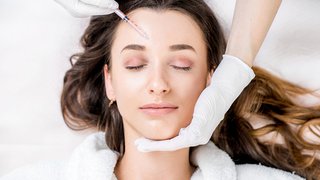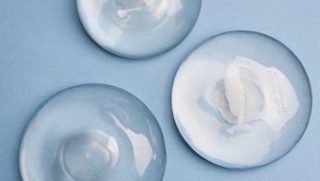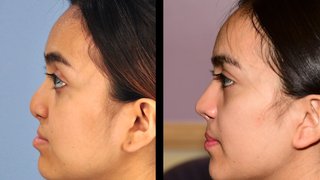Laser resurfacing can rejuvenate your face and skin
July 21, 2022

Looking into the bathroom mirror each morning, we can’t help but notice age-related changes to our skin, whether it’s lines around our eyes and mouth or wrinkles on our face or forehead. Skin is our largest organ and, unfortunately, it responds to age by becoming thinner, less elastic, and discolored.
Over time, damage from the sun’s UV rays and habits such as smoking can lead to:
- Enlarged pores
- Melasma (brown or blue-gray patches on the skin)
- Perioral lines (fine lines around the mouth)
- Pigment irregularities
- Rosacea (redness in the cheeks and nose)
- Sunspots (hyperpigmentation from sun exposure)
- Uneven textures
- Noticeable veins and capillaries
- Wrinkles
Changes in how we look can decrease our confidence in social settings and at work. Cosmetic surgery is an option, of course, but more and more patients are looking to a spectrum of laser resurfacing options to rejuvenate their skin and turn back the clock a bit.
Laser skin rejuvenation involves heating and removing damaged skin cells so new, healthy cells can grow in their place. Laser options are among the most popular minimally invasive cosmetic procedures, with 55% more people receiving treatments in 2021 than 2020, according to The Aesthetic Society.
Laser experts in UT Southwestern’s Department of Plastic Surgery offer the full range of techniques and technologies, all tailored to your needs. Our cosmetic surgeons and specially trained technicians understand the intricacies of laser technology and know how to safely push the boundaries of our tools to provide optimal outcomes.
Though laser skin rejuvenation can provide significant results, it’s not a one-and-done procedure for most patients – committing to ongoing skin maintenance will help retain your results longer, whether you are seeking smoother, clearer skin or “prejuvenation” to get in front of early signs of aging.
Every laser skin treatment plan begins with a consultation, so we can help you establish a strong skincare foundation and develop a realistic, satisfying rejuvenation plan. Options are developed based on need and acceptable downtime.
Begin with a strong skincare foundation
A study published in 2019 by the National Institutes of Health examined the skin of patients who used a simple skincare regimen and those who used an advanced skincare routine. Researchers found that the advanced routine patients had skin that was better hydrated, smoother, had smaller pores, more even melanin, and shallower lines around the eyes. They also noted a significant increase in skin brightness among those patients.
Important components of most care routines include a cleanser to clear away impurities and excess oils, toner to balance the skin’s pH levels, and moisturizer to smooth and soften. We also recommend that patients use vitamin C or another antioxidant to protect the skin from environmental stressors, and a strong, effective sunscreen to prevent damage from the sun’s UV rays.
For patients with pigment concerns, we may recommend a skin brightening agent possibly containing retinol to remove dull cells and restore vibrancy. Retinol promotes the development of collagen, which is a protein that can improve the skin’s elasticity, reduce wrinkles, and create a more youthful appearance.
Once you are comfortable with your skincare routine, we can start discussing laser rejuvenation options. A plastic surgeon can help you set achievable goals and determine which laser treatment might give you the best outcomes.

Laser skin rejuvenation options
Laser skin resurfacing is available at many spas and aesthetician centers in the Metroplex. We recommend seeing a specialist or doctor in a medical setting for laser procedures because, while technological advances have made rejuvenation procedures safer, they are not without risk. Potential complications can include infection, scarring, flare-ups of psoriasis, uneven skin coloration, and contact dermatitis.
Our laser devices generate an intense beam of one wavelength of light, which we can adjust to make subtle or significant changes in the skin. UT Southwestern plastic surgeons and aestheticians use several lasers to treat specific facial skin conditions, three of which will be highlighted here.
MOXI: The “lunchtime laser”
MOXI™ is a non-ablative, fractioned laser that can generate subtle skin changes. It does not remove any skin, but rather uses fractional light to stimulate the cells to produce new collagen. You can get a facial treatment in approximately 30 minutes and return to normal activities right away.
MOXI can help with:
- Pigment
- Prejuvenation
- Pores
After treatment, many patients will develop tiny dark spots on the skin called microscopic epidermal necrotic debris (MENDS). Leave these spots alone, and do not exfoliate or scrub them – MENDS are a sign the skin is healing from treatment and that fresh skin is replenishing below the surface.
Most patients experience only minor skin peeling for a few days. Expect some redness and swelling, which can feel like a sunburn – ibuprofen can help with these mild side effects. After the skin has peeled, your skin will look clearer with a smoother pigmentation.
HALO: A hybrid option
The HALO is a hybrid fractional laser, meaning it can perform non-ablative (heats up the underlying skin tissue) treatments and ablative treatments, which remove the outer layer of skin and heat the layer beneath to stimulate collagen growth.
HALO procedures can help with mild lines and textural changes deeper, such as:
- Acne scars
- Fine lines and wrinkles
- Rough, bumpy skin
After a HALO treatment, you may develop MENDS and your skin may feel moderately swollen and sunburnt. Some patients will notice slight itching, stinging, oozing, or bleeding for a few days after treatment.
Your skin may feel very dry for five to seven days, then skin will finish peeling and the “Halo Glow” – a shiny, rosy look – will appear for a couple days before fading to a natural appearance. If you choose HALO, we typically plan one treatment, or two a month apart, followed by six-month or annual maintenance follow-up visits.
Erbium: Deeper treatment, longer recovery
The Erbium laser is an ablative device intended to treat moderately deep wrinkles and lines by removing the outer layer of skin. After recovery, fresh skin rises to the surface and collagen production is stimulated to make the skin fuller and more resilient.
Erbium can help with:
- Actinic keratoses (rough, scaly patches from sun exposure)
- Deeper wrinkles
- Scars
- Small, fragile skin concerns around the mouth and eyes
- Sunspots
Patients can expect one to two weeks of healing with swelling and scabbing. Some patients may experience rawness, oozing, and a yellow liquid that forms a crust on treated areas over the first few days. Five to seven days after the treatment, the skin will become dry and peel, revealing fresh skin beneath. As the skin produces new collagen, you may see continued improvement over time.
A single treatment is often sufficient to achieve dramatic results, though we may recommend follow-up visits six to 12 months after initial treatment.
Non-laser skin rejuvenation
Our plastic surgeons offer a selection of laserless skin rejuvenation options, including:
- Morpheus8 radiofrequency microneedling, which we can use with laser treatments to tighten loose skin over the jawline.
- Broadband light (BBL), a rejuvenation treatment that uses different wavelengths of light rather than lasers to address redness and pigmentation. It is often used in combination with other technologies to produce excellent results.
- Fillers and neurotoxins, which are injected into the skin to restore volume and smooth wrinkles and make them less noticeable.
Related reading: Ready for your video call closeup? Simple ways to look and feel confident
The future of laser skin rejuvenation
UT Southwestern is conducting clinical research to deepen our understanding of laser skin rejuvenation and provide data-driven recommendations for the type and intensity of laser treatments to achieve the best results.
Our experience suggests that MOXI laser can produce excellent results treating melasma – a skin discoloration condition that is very difficult to treat.
We are also studying whether Morpheus8 radiofrequency microneedling can help rejuvenate fine lines, wrinkles, and skin irregularities in the area around the mouth.
While scientists have not yet developed a time machine, laser rejuvenation treatments can help us restore more youthful-looking skin for our patients. To get the best results, talk with a laser skin treatment expert – we have the experience and training to help you get the look you want, safely.



